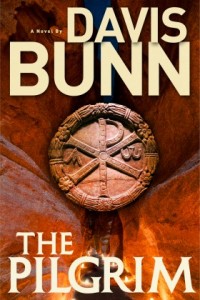 Every once in awhile a book I’ve read makes an impact on me, and I’d like to share what it is and why. Some books will be old and some newly published. I may also review the book on other sites. If so, I’ll include the hyperlink. Here’s the first—I chose historical fiction, of course!
Every once in awhile a book I’ve read makes an impact on me, and I’d like to share what it is and why. Some books will be old and some newly published. I may also review the book on other sites. If so, I’ll include the hyperlink. Here’s the first—I chose historical fiction, of course!
Title: The Pilgrim
Author: Davis Bunn
Place: 4th Century, Roman Empire
Genre: Historical Fiction
ISBN-10: 1632530341
ISBN-13: 978-1632530349
Hardcover and Paperback: 176 pages
Publisher: Franciscan Media
Publication Date: July 17, 2015
Official Overview of The Pilgrim
Travel with Empress Helena, mother of the emperor Constantine the Great, on a perilous journey through ancient Judea to Jerusalem.
Abandoned by her husband, in danger because of her faith, but with an implacable will to do what God calls her to, Helena meets those who would help and harm her along the way. Miracles seem to follow this humble but determined woman as she wins many over to the faith, and changes lives forever—including her own. This unforgettable story is a vivid portrait of one of Christian history’s most important women.
My Review
Fourth Century Christians, often imprisoned as slaves and brutally murdered for their belief, find solidarity with a Roman empress who has undergone her own kind of persecution. Why this happened is a faith building highpoint of The Pilgrim.
Author Davis Bunn had me walking through the desert heat and tasting its salty air. I joined St. Helena, mother of Constantine the Great, as she delivered the Edict of Milan throughout the Roman Empire. When I entered this ancient story world, I understood her humanity, fears and courage, sorrow, and ultimate joy of seeing the fulfillment of God’s will for her life—but not of her life alone.
Through his engaging storytelling, Bunn drew me into the emotional ups and downs of soldiers, prisoners, lepers, and priests. I felt the wonder of discovery as I learned about the early Church, its key players, the Holy Land, and power of God to heal disease and give hope to the broken hearted. I sensed their dread of being hounded by enemies. I was hungry as Helena fasted for clarity and trust in her mission: to reestablish decimated churches and propagate the Kingdom of Heaven on earth. And while the spiritual aspect kept me glued to the page, my interest peaked at her greatest discovery, something which continues to inspire Christians around the world.
This story captured my heart, and because of its clear language and age appropriate content, I believe it will do the same for anyone interested in historical fiction.
I received a complimentary copy of this book from Franciscan Media in exchange for my honest review.
Read my other reviews of The Pilgrim at:
http://www.barnesandnoble.com/w/the-pilgrim-davis-bunn/1121208709?ean=9781616368654
https://www.facebook.com/amynowakauthor/posts/371544173039693
For a free PDF sampler of The Pilgrim, Chapters 1-3, click here: Sample of The Pilgrim by Davis Bunn
The Author
Davis Bunn is an award-winning novelist with total worldwide sales of seven million copies.
His work has been published in twenty languages, and critical acclaim includes four Christy Awards for excellence in fiction and his 2014 induction into the Christy Hall of Fame.
Davis divides his time between Florida and England, where he serves as Writer In Residence at Regent’s Park College at The University of Oxford. Visit Davis at http://www.davisbunn.com.
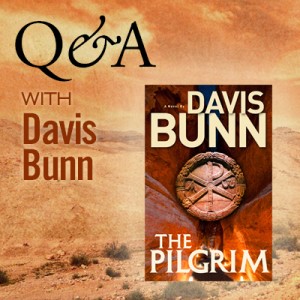 Q&A With Davis Bunn, author of The Pilgrim
Q&A With Davis Bunn, author of The Pilgrim
Q: There are many legends about Constantine and his mother, Helena. How did you decide which legend to incorporate into the story?
Davis Bunn: The period when Constantine became the first Christian emperor is one about which so much has been written, and yet so little detail is known. No one knows for certain where his mother, Helena – the main character in The Pilgrim – was born. There are three main legends, and I used the one that has the greatest sense of historical resonance, that she was British, and her father ruled one of the provinces taken over by the Romans. Her husband was a general who met Helena in the local market and fell in love at first sight.
Q: What is the appeal of writing about a historical figure? What was one special challenge you faced in doing so?
First and foremost, Helena is a saint in the eyes of the Catholic church. Her son, Emperor Constantine, was the first Roman leader to convert to Christianity. His death marked the moment when Christians were freed from persecution. Constantine was led to faith by his mother. The Pilgrim is her story.
While I am a fervent evangelical Protestant, my wife is Catholic. My mother is a Catholic convert. As is my sister, who has raised her two daughters as Catholic. So part of what I wanted to do here was to grow closer to the heritage that these dear people treasure. Their faith has had such an impact on my own life. It was important that I use this story and this opportunity to create something that would honor their perspective on faith. I also wanted to share with readers the enormous life lessons we can learn from the lives of the saints.
So many, many different issues came up as a result of this quest. It proved to be a beautiful and intense growing experience. Although this book is not particularly long, the actual writing took as long as some of my much bigger books. Part of this was honing the story so their faith, and their history, was honored, but done from a foundation that reflected my own personal walk in faith.
My hope, my fervent prayer, is that the story will resonate with readers from both faith communities.
Q: The end of The Pilgrim leaves the reader wanting more. Will you revisit this story down the road?
I am working on a second book, The Fragment, which is scheduled for publication in the spring of 2016. The Fragment carries some of the concepts from The Pilgrim into the early twentieth century, when the U.S. came to possess a reliquary with a supposed component of Jesus’s cross. It ends in a vignette that happens today, when a couple travels to Rome.
Q: How can readers find you on the Internet?
Website: http://www.davisbunn.com/
Subscribe to Davis’s e-newsletter: Send a blank email to [email protected]
Receive Davis’s latest blog posts via your feed reader: http://feeds.feedburner.com/DavisBunn
Facebook: https://www.facebook.com/davisbunnauthor
Goodreads: https://www.goodreads.com/davisbunn
Twitter: https://twitter.com/davisbunn
Pinterest: https://www.pinterest.com/davisbunn/
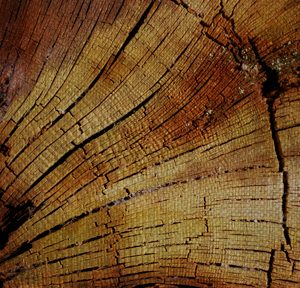 “I think it may be dying.”
“I think it may be dying.”

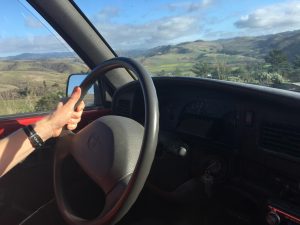 Imagine yourself far away from home, across the ocean far, lost in an unexplored land, surrounded by animals you’ve never seen or could imagine (and they’re big, like bison big), and following a guide your gut tells you not to trust.
Imagine yourself far away from home, across the ocean far, lost in an unexplored land, surrounded by animals you’ve never seen or could imagine (and they’re big, like bison big), and following a guide your gut tells you not to trust.
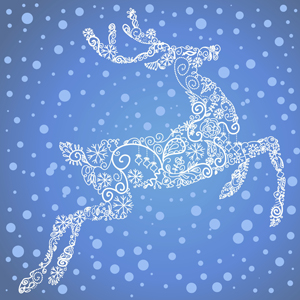 Looking through my car window, the doe looked okay. But something wasn’t right.
Looking through my car window, the doe looked okay. But something wasn’t right.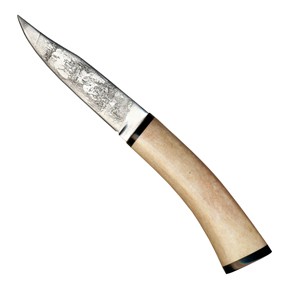
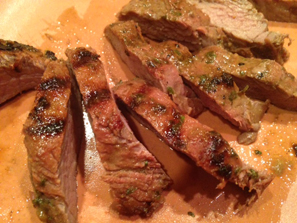




 Monarch butterflies (not to be confused with Catholic Monarchs, such as Queen Isabella I of Castile and King Ferdinand II of Aragon, who sponsored the exploration of the New World by Christopher Columbus) require milkweed plants to survive. In fact, Monarch caterpillars eat only milkweed. But the breakfast table can easily become the lunch and dinner counter too. Each individual flower in a milkweed blossom has a rich nectar to attract, sustain, and sometimes detain, as the petal structure can ensnare insect legs. During the autumn months, many adult butterflies migrate and overwinter in the forests of Mexico.
Monarch butterflies (not to be confused with Catholic Monarchs, such as Queen Isabella I of Castile and King Ferdinand II of Aragon, who sponsored the exploration of the New World by Christopher Columbus) require milkweed plants to survive. In fact, Monarch caterpillars eat only milkweed. But the breakfast table can easily become the lunch and dinner counter too. Each individual flower in a milkweed blossom has a rich nectar to attract, sustain, and sometimes detain, as the petal structure can ensnare insect legs. During the autumn months, many adult butterflies migrate and overwinter in the forests of Mexico.

 If you want to incorporate milkweed into your landscape, or if you are interested in learning more about Native American weaving techniques, below are a few websites I found helpful.
If you want to incorporate milkweed into your landscape, or if you are interested in learning more about Native American weaving techniques, below are a few websites I found helpful.
 Basketmaker people settled the land sometime around the year 300. The Anasazi continued to live there until the 12th Century. But archaeologists believe the site was first inhabited as early as 8,000 BC!
Basketmaker people settled the land sometime around the year 300. The Anasazi continued to live there until the 12th Century. But archaeologists believe the site was first inhabited as early as 8,000 BC! Lots of critters lived in and around the backyard of our Arizona home. The arroyos (dry riverbed that holds water for brief periods) behind our lot invited snakes, javalinas (a sort of peccary, or wild hog), lizards, and an assortment of insects, some almost as large as my cat. Well, almost! And did I mention birds? Owls, roadrunners, and other desert specimens, but the cutest by far was… oh my. And here I am writing about their consumption.
Lots of critters lived in and around the backyard of our Arizona home. The arroyos (dry riverbed that holds water for brief periods) behind our lot invited snakes, javalinas (a sort of peccary, or wild hog), lizards, and an assortment of insects, some almost as large as my cat. Well, almost! And did I mention birds? Owls, roadrunners, and other desert specimens, but the cutest by far was… oh my. And here I am writing about their consumption.
 Serve chicken in a warm tortilla adorned with the remaining fruit.
Serve chicken in a warm tortilla adorned with the remaining fruit.



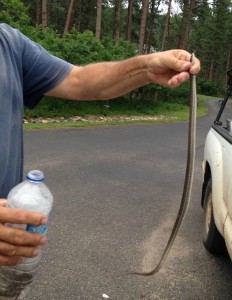
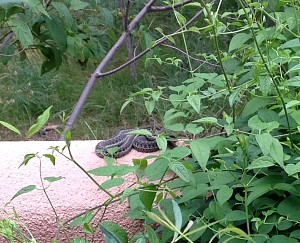
 I am a terrible golfer. I’ve taken lessons and been given lots of friendly advice, but the thing I need the most is practice. Lots and lots of practice. Yet, when the rarity of free time becomes available, I find plenty of other things to do.
I am a terrible golfer. I’ve taken lessons and been given lots of friendly advice, but the thing I need the most is practice. Lots and lots of practice. Yet, when the rarity of free time becomes available, I find plenty of other things to do. The flag of Scotland is a blue background with a white saltire. Legend claims that it was during a 9th Century battle that a saltire lay across the blue sky. This encouraged the troops greatly, and theirs was the victory.
The flag of Scotland is a blue background with a white saltire. Legend claims that it was during a 9th Century battle that a saltire lay across the blue sky. This encouraged the troops greatly, and theirs was the victory.
Recent Comments